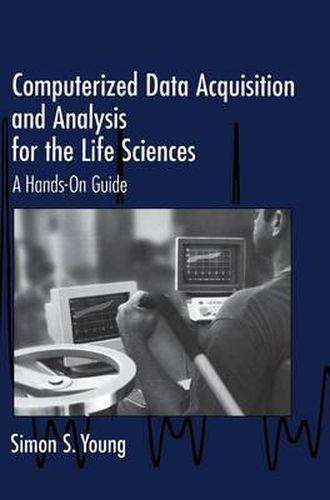Readings Newsletter
Become a Readings Member to make your shopping experience even easier.
Sign in or sign up for free!
You’re not far away from qualifying for FREE standard shipping within Australia
You’ve qualified for FREE standard shipping within Australia
The cart is loading…






Computerized data acquisition systems are often the principal method of recording experimental results. This book takes the reader step-by-step through the process of data acquisition and analysis, explaining how to set up the systems and obtain useful information from the data recorded. In an easy-to-read style, the author guides researchers through the basics of data acquisition systems, explaining the important underlying concepts, and giving numerous examples of how to analyze the recorded information. While aimed at researchers in the life sciences, the topics covered are general and will be valuable to anyone interested in learning to use data acquisition systems. The principles can be applied to the collection of data from respiratory apparatus to behavioral science experiments, and a host of other situations. Many illustrations and worked examples accompany the text, and the mathematics are kept simple. This book is an invaluable tool for the nonengineer who is collecting and analyzing experimental data using data acquisition systems. Researchers, graduate students, and technicians will find it an up-to-date and indispensable guide for setting up equipment and getting the most out of their data.
$9.00 standard shipping within Australia
FREE standard shipping within Australia for orders over $100.00
Express & International shipping calculated at checkout
Computerized data acquisition systems are often the principal method of recording experimental results. This book takes the reader step-by-step through the process of data acquisition and analysis, explaining how to set up the systems and obtain useful information from the data recorded. In an easy-to-read style, the author guides researchers through the basics of data acquisition systems, explaining the important underlying concepts, and giving numerous examples of how to analyze the recorded information. While aimed at researchers in the life sciences, the topics covered are general and will be valuable to anyone interested in learning to use data acquisition systems. The principles can be applied to the collection of data from respiratory apparatus to behavioral science experiments, and a host of other situations. Many illustrations and worked examples accompany the text, and the mathematics are kept simple. This book is an invaluable tool for the nonengineer who is collecting and analyzing experimental data using data acquisition systems. Researchers, graduate students, and technicians will find it an up-to-date and indispensable guide for setting up equipment and getting the most out of their data.